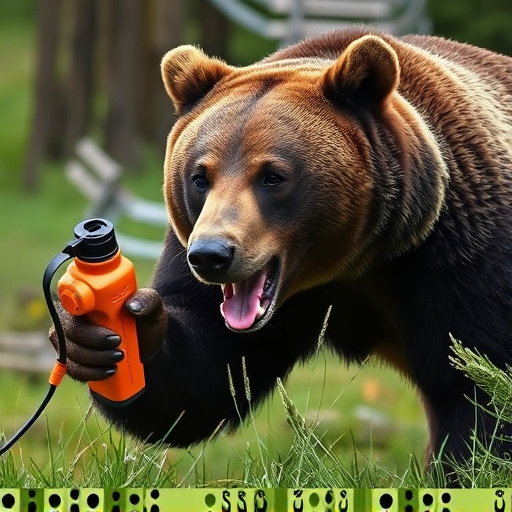Bear spray, a vital safety tool for wilderness encounters, utilizes capsicum derivatives to deter bears but is susceptible to freezing in extreme cold. To maintain its effectiveness, it should be stored at consistent warm temperatures (50-70°F/10-21°C) away from direct sunlight and heat sources, avoiding sub-freezing conditions that can reduce performance or render it unusable. Regular checks for damage or leakage are also crucial to safeguard the integrity of the device.
“In wild landscapes, encountering bears is a potential reality for outdoor enthusiasts. Bear spray emerges as a critical tool for self-defense and wilderness protection. This article unravels the capabilities of bear spray, delving into its composition and effectiveness against aggressive bears. We explore essential storage considerations to maintain its viability, addressing the crucial question: can bear spray freeze in storage? Understanding temperature’s role is key to preserving this life-saving device.”
- Understanding Bear Spray: Its Composition and Effectiveness
- Storage Considerations: Ensuring Bear Spray Remains Viable
- The Role of Temperature: Can Bear Spray Freeze and How to Prevent It?
Understanding Bear Spray: Its Composition and Effectiveness
Bear spray is a crucial device for wilderness protection, designed to deter and repel bears when facing an encounter. Its composition typically includes capsicum derivatives, similar to pepper spray used for human self-defense. This active ingredient stimulates the bear’s eyes, nose, and throat, causing temporary disorientation and escape from the area. The effectiveness of bear spray lies in its ability to create a safe distance between the user and the bear, providing valuable time to retreat or seek shelter.
When storing bear spray, it’s essential to consider its potential vulnerability to freezing conditions. Unlike conventional pepper sprays, bear spray formulations are not water-based; instead, they use petroleum-based carriers. While this enhances their strength, it also means that they can freeze in extremely cold temperatures. To prevent freezing and maintain optimal performance, storage in a warm environment or the use of insulated containers is recommended. Understanding these factors ensures users can fully rely on bear spray as a reliable protection mechanism during outdoor adventures in bear country.
Storage Considerations: Ensuring Bear Spray Remains Viable
When storing bear spray, it’s crucial to consider environmental factors that could impact its viability. One common concern is whether bear spray can freeze during storage, especially in colder climates. Bear spray containers are designed to withstand low temperatures, and modern formulations include antifreeze agents to prevent freezing. However, prolonged exposure to sub-freezing temperatures may still cause the spray to become less effective or even unusable. To ensure optimal performance, it’s recommended to store bear spray in a location with consistent temperatures above 32°F (0°C).
Additionally, keeping the spray out of direct sunlight and away from heat sources can prevent degradation of its active ingredients over time. Proper storage involves placing the can in a secure, dry place, ideally inside a protective case or pouch, to safeguard against physical damage. Regular checks for any signs of leakage, corrosion, or damage are essential to maintain the integrity of your bear spray device and guarantee its readiness when needed in the wilderness.
The Role of Temperature: Can Bear Spray Freeze and How to Prevent It?
Bear spray is a crucial tool for wilderness protection, but its effectiveness depends on optimal conditions. One common concern among users is whether bear spray can freeze in cold temperatures during storage. It’s important to understand that bear spray itself does not freeze easily, as it contains a mixture of capsaicin and other ingredients designed to disrupt an animal’s sensory perception. However, the container it comes in can be susceptible to freezing.
To prevent freezing and ensure the spray remains viable, it’s recommended to store bear spray in a warm location. Ideal storage temperatures range between 50°F to 70°F (10°C to 21°C). Avoiding extreme cold is key; if left in sub-freezing temperatures for extended periods, the liquid inside the canister could freeze, potentially damaging the nozzle or reducing spray intensity. Proper storage practices will help ensure that your bear spray remains a reliable protection device when you need it most in the wilderness.
Bear spray is a valuable tool for wilderness protection, but proper storage is key to maintaining its effectiveness. Understanding the impact of temperature, especially during freezing conditions, is crucial. By taking simple precautions, such as storing bear spray in regulated temperatures and preventing direct exposure to cold, you can ensure its viability when you need it most. Remember, knowing how to use bear spray properly and keeping it reliable are essential for safe outdoor adventures.
